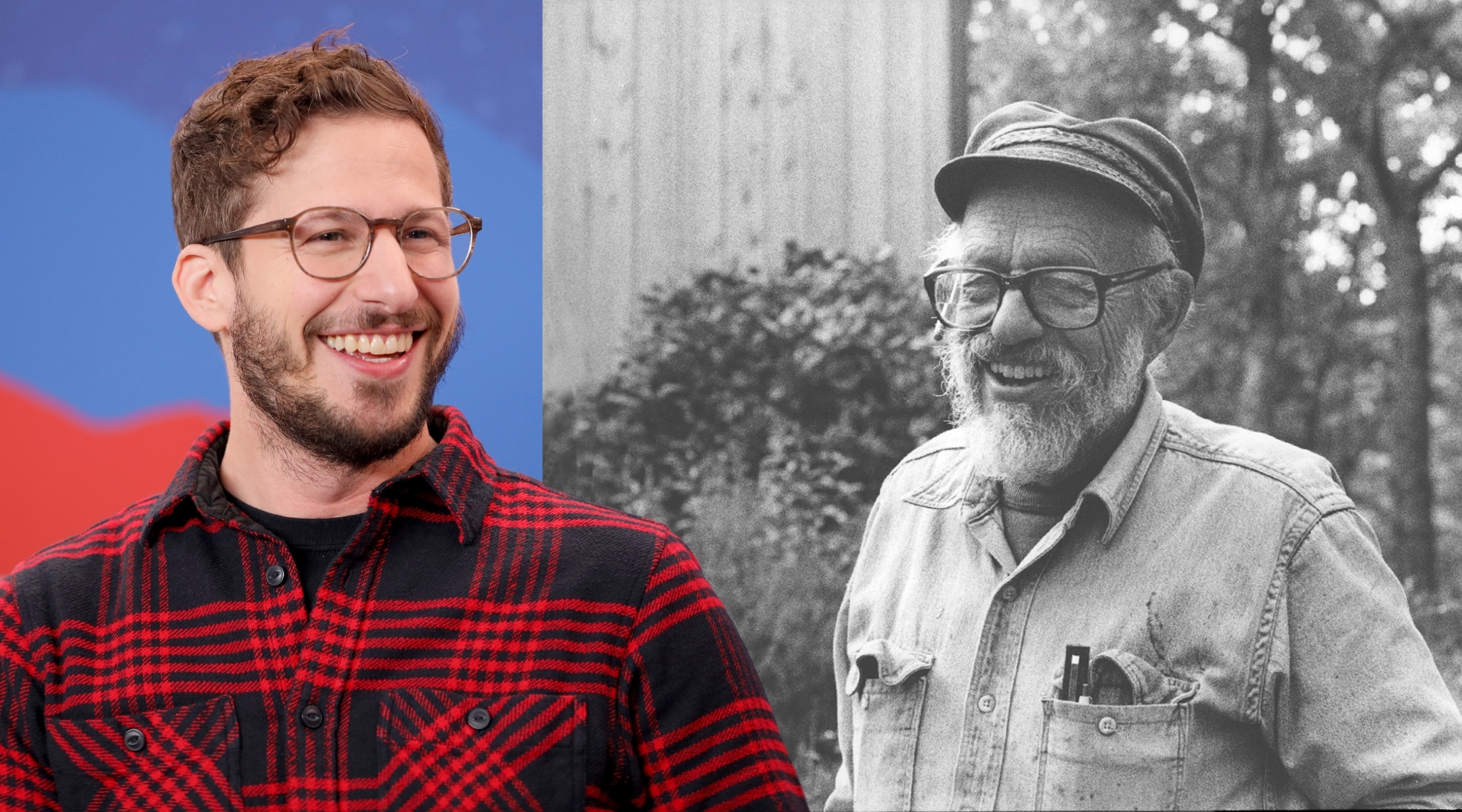Andy Samberg plays a famous Jewish WWII photographer in upcoming biopic
In ‘Lee,’ the Jewish comedian plays David E. Scherman, who along with Lee Miller captured the early horrors of the Holocaust

Jewish actor and comedian Andy Samberg, left, portrays World War II photographer David E. Scherman, right, in the biographical film “Lee”. (Rich Polk via Getty Images for IMDb and Wikimedia Commons)
(JTA) — A historic wartime photography partnership from the 1940s — often credited as the first to capture many of the horrors of the Holocaust — is getting the Hollywood treatment.
Kate Winslet stars in “Lee” as model-turned-wartime-photojournalist Lee Miller, who often worked alongside David E. Scherman, a Jewish photographer portrayed in the film by Jewish actor and comedian Andy Samberg. The film debuted at the Toronto International Film Festival on Saturday.
Miller, then employed by Condé Nast, and Scherman, employed by LIFE Magazine, were among the first to enter the city of Nuremberg, the Dachau concentration camp and Berchtesgaden, where the Nazi Party had its “Eagle’s Nest” fortified alpine retreat. They also covered the D-Day invasion of Europe, the first battles on the beaches of Normandy and the liberation of Paris in 1944.
While on assignment, Scherman survived two small plane crashes. His first near-death experience in wartime came in April 1941, before the United States had entered the war. Scherman was headed to Cape Town when his ship was shelled by a German warship disguised as a merchant vessel. Scherman’s photographs of the warship, smuggled back to the United States in tubes of toothpaste and shaving cream, were published in LIFE and later used by the British navy to identify the boat and sink it.
Scherman was also one of the first photographers to enter Munich during the war, where he discovered Hitler’s home, the location of which was not yet known to Allies, according to his obituary in The New York Times. It was there that he and Miller took some of the most iconic photographs from their creative partnership — most notably of Miller in Hitler’s bathtub, coincidentally snapped on the day of Hitler’s suicide in Berlin. In the series of photographs, a portrait of Hitler sits on the tub to her left, and her boots, still dusty from the duo’s visit to Dachau earlier that morning, dirty up the towel on the floor. The concentration camp had been liberated the day before.
“She understood the meaning of being able to stomp her dirt and mud-laden boots on Hitler’s prissy bath mat — it was the mud of Dachau, which she had just seen and witnessed,” Ellen Kuras, the cinematographer who worked on “Lee,” told Vanity Fair. “Lee Miller had a great sense of irony. Even though we may not have seen that in photographs, we wanted to be able to capture that.”
When Miller finished posing, Scherman took her place and Miller took the camera, her son Antony Penrose told the Jewish News ahead of an exhibition about her photography in 2015. (Penrose also wrote “The Lives of Lee Miller,” the book upon which the screenplay for “Lee” was based, and he stars in the film as an extra.)
“Now if you were to see the photo of Scherman, Lee tilts up to fully include the showerhead prominently,” Penrose explained. “Why? Because Scherman was Jewish and that morning they had been in a very different type of shower room, one that was disguised as such, but was in fact a gas chamber. There are thousands of words in those two pictures.”
This article originally appeared on JTA.org.















